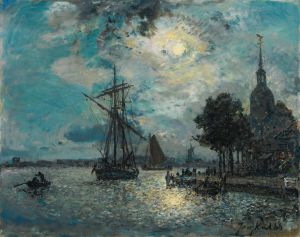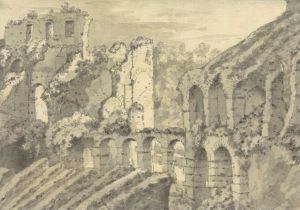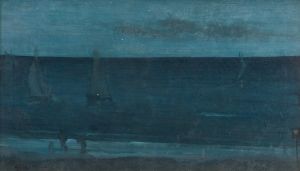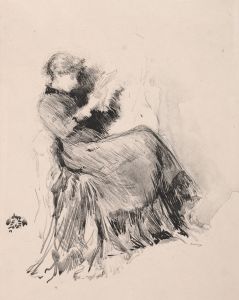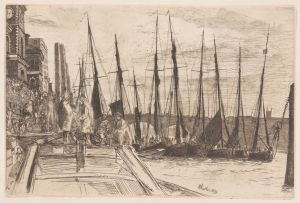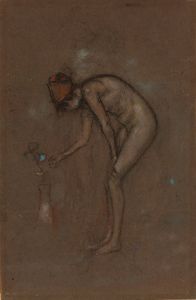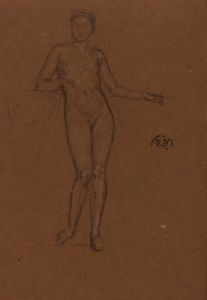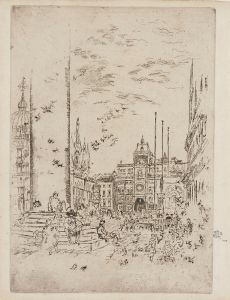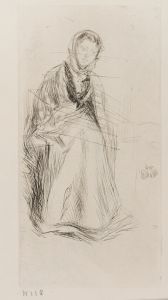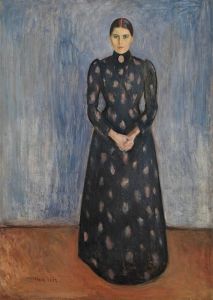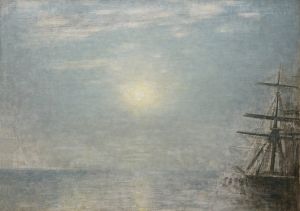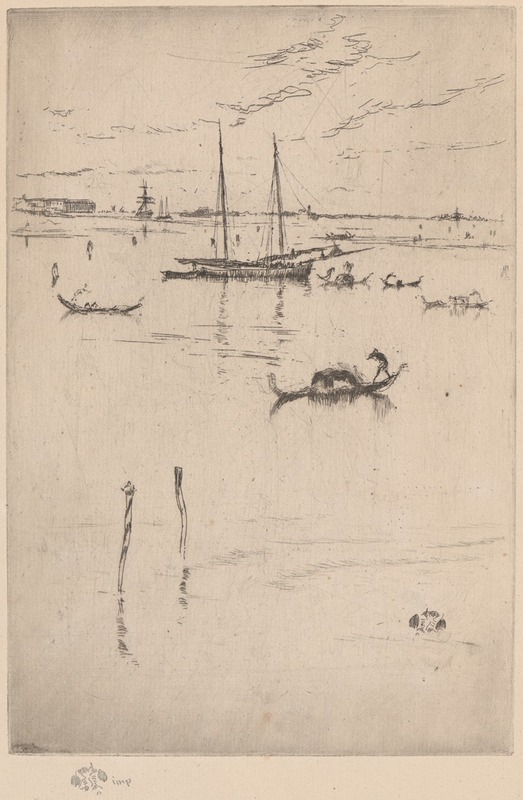
The Little Lagoon
A hand-painted replica of James Abbott McNeill Whistler’s masterpiece The Little Lagoon, meticulously crafted by professional artists to capture the true essence of the original. Each piece is created with museum-quality canvas and rare mineral pigments, carefully painted by experienced artists with delicate brushstrokes and rich, layered colors to perfectly recreate the texture of the original artwork. Unlike machine-printed reproductions, this hand-painted version brings the painting to life, infused with the artist’s emotions and skill in every stroke. Whether for personal collection or home decoration, it instantly elevates the artistic atmosphere of any space.
James Abbott McNeill Whistler was an American artist known for his significant contributions to the art world during the late 19th century. He was a leading figure in the Aesthetic Movement, which emphasized the visual and sensual qualities of art and design over practical, moral, or narrative considerations. Whistler is best known for his paintings, etchings, and lithographs, which often feature a subtle use of color and a focus on mood and atmosphere.
One of Whistler's notable works is "The Little Lagoon," an etching created in 1879-1880. This piece is part of a series known as the "Venice Set," which Whistler produced during his time in Venice. The "Venice Set" consists of a collection of etchings that capture the essence and beauty of the city, showcasing its architecture, canals, and atmospheric qualities. Whistler's time in Venice was a period of artistic rejuvenation for him, and the works he produced there are considered some of his finest.
"The Little Lagoon" exemplifies Whistler's mastery of etching, a printmaking technique that involves using acid to cut into the unprotected parts of a metal surface to create a design. In this work, Whistler captures a tranquil scene of a Venetian lagoon, characterized by its delicate lines and subtle tonal variations. The etching reflects Whistler's interest in capturing the fleeting effects of light and atmosphere, a hallmark of his style.
Whistler's approach to etching was innovative for his time. He often employed a technique known as "drypoint," which involves scratching the image directly onto the plate with a sharp needle, creating a softer, more velvety line. This technique allowed Whistler to achieve a sense of immediacy and intimacy in his prints, as seen in "The Little Lagoon." The composition is carefully balanced, with an emphasis on the interplay between water and sky, creating a harmonious and serene image.
The "Venice Set," including "The Little Lagoon," was well-received by critics and collectors alike. Whistler's ability to capture the unique atmosphere of Venice, combined with his technical skill, contributed to the success of these works. The etchings were published in 1880 and helped to solidify Whistler's reputation as a leading artist of his time.
Whistler's work, including "The Little Lagoon," is characterized by its focus on mood and atmosphere rather than detailed representation. This approach aligns with the principles of the Aesthetic Movement, which prioritized beauty and sensory experience over narrative content. Whistler's influence can be seen in the works of later artists who embraced similar ideals, and his contributions to the art of etching continue to be celebrated today.
In summary, "The Little Lagoon" by James Abbott McNeill Whistler is a significant work within the artist's oeuvre, showcasing his skill in etching and his ability to capture the atmospheric qualities of Venice. It remains an important example of Whistler's contribution to the Aesthetic Movement and his lasting impact on the art world.






